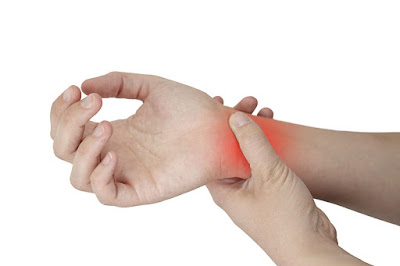What is carpal tunnel syndrome?
In carpal tunnel syndrome is the Middle nerve in the wrist problem. Signs and symptoms of carpal tunnel syndrome:
- In your fingers you will feel tingling, numbness and pain.
- The pain may radiate to your arm and shoulder.
- You have less power and let easy something out of your hands.
- Things like driving, cycling, reading the newspaper and use your hands, make your symptoms worse.
- At night, the pain is often the worst.
The doctor examines if you have carpal tunnel syndrome by creating an electromyogram.
How to diagnose carpal tunnel syndrome (Test)?
To determine if you have carpal tunnel syndrome, your doctor will ask you about your symptoms. They also do a physical examination to see if you do not have another illness, such as a neck hernia or arthritis of the neck.
Does the doctor to carpal tunnel syndrome, it will do the following tests:
- Blood tests may be necessary in order to detect, for example, hormonal causes.
- If the doctor thinks that the cause is in the bones, let them make a radiograph.
- To confirm the diagnosis you get a muscle research (electromyogram (EMG)). For example, the neurologist can see whether the nerve indeed clamp is in the carpal tunnel, and not on any other place.
Treatment of carpal tunnel syndrome
If you experience carpal tunnel syndrome or if your symptoms pass again little affected (after pregnancy for example), you do not need treatment. Sometimes the doctor measures a splint on. The wrist will then rest. Will the pain not go away after resting, it can help an injection in the wrist with corticosteroids and anesthetic.
Often, surgery is needed to get rid of all the complaints. The operation takes about half an hour. The surgeon cuts the top of the carpal tunnel through so that the nerve will get more space. This is also possible with keyhole surgery.
After surgery, you can use a couple of weeks your hand less.
Do you have carpal tunnel syndrome in both hands? Then you will first be operated on the one hand and just a few weeks later on the other hand.
If you are taking blood thinning medication, you should probably stop here along for the operation. Discuss this with your doctor.
You may not drive yourself after surgery. Therefore, make sure that someone drive you home after surgery.
After surgery on carpal tunnel syndrome
A few hours after surgery in carpal tunnel syndrome is the anesthesia worked. You then have some post-operative pain. That is normal. Acetaminophen helps against it.
After surgery, you will get a sling for the first few days. Your fingers, you can continue to move the most common. Therefore, do not wear splint after surgery. Your palm will need two weeks of rest to heal properly. Keep the wound dry. After a week you can get the bandage off. After ten to fourteen days, the doctor takes the stitches out.
The scar on your wrist is still a few months sensitive, especially when busy. For example if you support your wrist. It may take longer for the power in your hand is normal. The tingling in the fingers are often rapidly after the operation, but they can also fade. You can add a little less sense in keeping your fingers.
Complications with surgery for carpal tunnel syndrome
There are rare complications in a carpal tunnel syndrome operation. Possible complications include infection and bleeding afterwards. If you have pain or if the wound continues to bleed, you should immediately contact your physician or neurosurgeon.
Sometimes damaged during surgery a small nerve branch that runs to a number of muscles in the thenar. There you will probably notice nothing. In some people, the thumb moves more difficult.
Another rare but serious complication is post-traumatic dystrophy. Your hand swells up, it hurts (especially in motion), and turns red or blue. Warn your doctor as soon as possible on these complaints.

